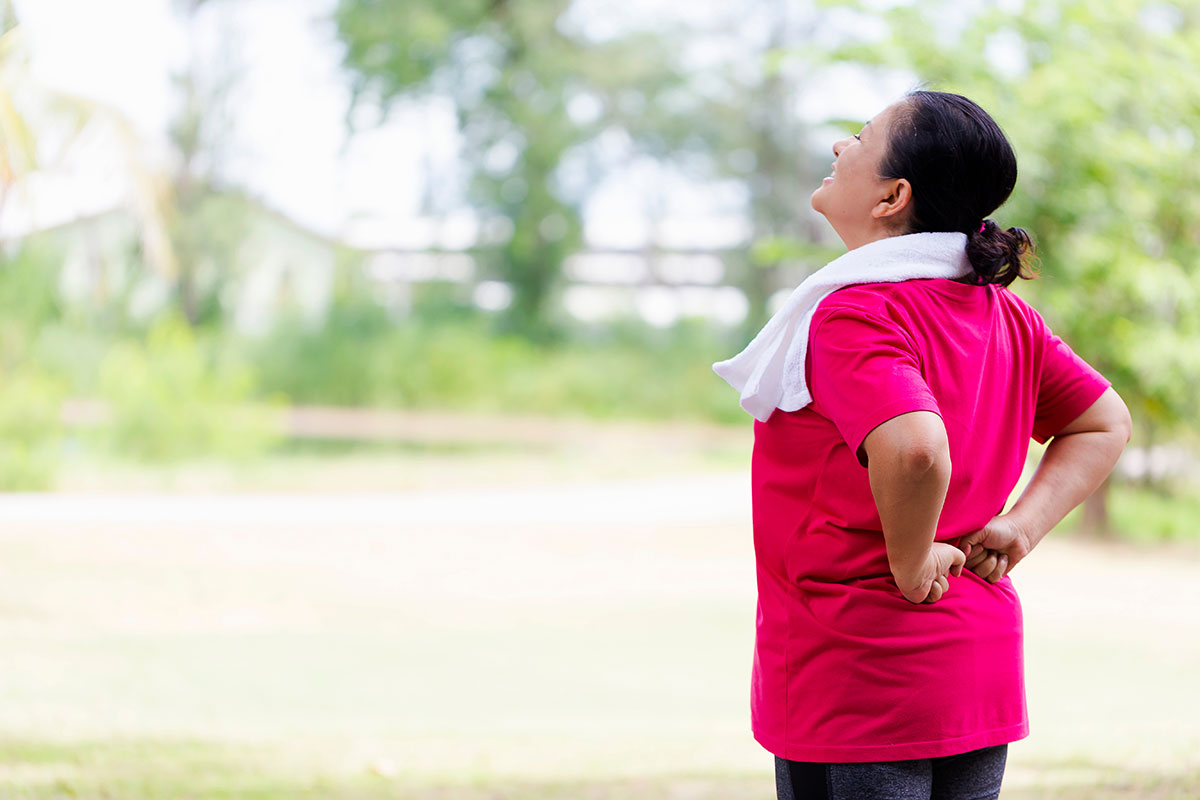How to Protect Your Spine and Lower Back During Exercise


It’s common knowledge that exercise boosts muscle strength, endurance, and good health. But what happens when that physical activity ends up hurting you, especially your lower back muscles or spine?
Back injuries that occur with exercise include lumbar (lower back) strain, pulled muscles, neck sprains and rarely, stress fractures. The most common culprits are lifting weights that are too heavy and losing form. Despite the potential shot to pride or ego, when it comes to lifting weights in the gym, it’s imperative that you start with lighter weight and gradually move up as you gain muscle strength. It is also imperative that you not sacrifice form in order to push a larger load.

While some exercise-induced injuries occur with a sudden wrong or awkward move, many are caused by repetitive motion over time, like tennis elbow. Performing the same motion repeatedly affects one muscle group, leading to wear and tear and gradual inflammation. Repetitive motion can also cause fractures or bruising of the tissue that supports the spine. This kind of injury typically occurs in wrestling, tennis, rowing, diving, dancing, volleyball, and gymnastics.
Overextension, a pulled muscle, and excessive, repeated movement can all cause pain in the lower back. Determining the root cause of the pain determines whether rest, ice, and over-the-counter anti-inflammatories will solve the problem or if you need to see a spine specialist like me.
Most back sprains from exercise occur when muscles or ligaments overstretch or tear. These tiny internal injuries can cause pain, stiffness and sometimes muscle spasms. For the most part, treating a sore back with ice, then heat, and over-the-counter pain relievers will help the pain dissipate, although it may take several days to a few weeks. If back pain persists or gets worse, or begins to radiate down your leg, consider asking for help.
Most serious spinal injuries occur in conjunction with a traumatic incident, such as a car accident, a fall, impact sports or recreational injuries, alcohol (which is involved in 1 in 4 spinal injuries), and some diseases, such as cancer, arthritis, or osteoporosis.
But repetitive motion during teenage years from sports or exercise can sometimes cause a spine fracture (also called pars fractures or spondylolysis), which is a stress fracture that occurs in the part of the spine called the pars interarticularis. In general, a neurosurgeon would diagnose this stress fracture using an x-ray, CAT scan or MRI. Short-term treatment may include a back brace and rest, but long-term treatment requires core strengthening.
While typical injuries from exercise won’t require a visit to the emergency department, there are signs for which back pain or related nervous system irregularities need immediate medical attention:
One final tip: strengthen your abs. Evidence indicates that patients with chronic low back pain benefit from strengthened core muscles.
Learn more about New Jersey Brain and Spine’s Comprehensive Spine Center.